The Future of Online Applications: Understanding Web Apps

As the world becomes increasingly digital, online applications or web apps have become ubiquitous.
These applications, accessed through a browser, provide users with an efficient and convenient solution for everyday tasks such as email management or video streaming.
I use AtOnce's email management software to save 3-5 hours per day with AI:
Understanding the future of web apps is crucial for businesses and individuals alike in order to stay current with modern technology trends.
Quick Summary
- Web apps are not the same as websites. They are interactive applications that run in a web browser.
- Web apps can work offline. They can cache data and run without an internet connection.
- Web apps can be installed on devices. They can be added to a home screen and launched like a native app.
- Web apps can access device features. They can use features like camera, microphone, and GPS.
- Web apps can be built with various technologies. They can be built with HTML, CSS, JavaScript, and frameworks like React and Angular.
Introduction To Web Applications
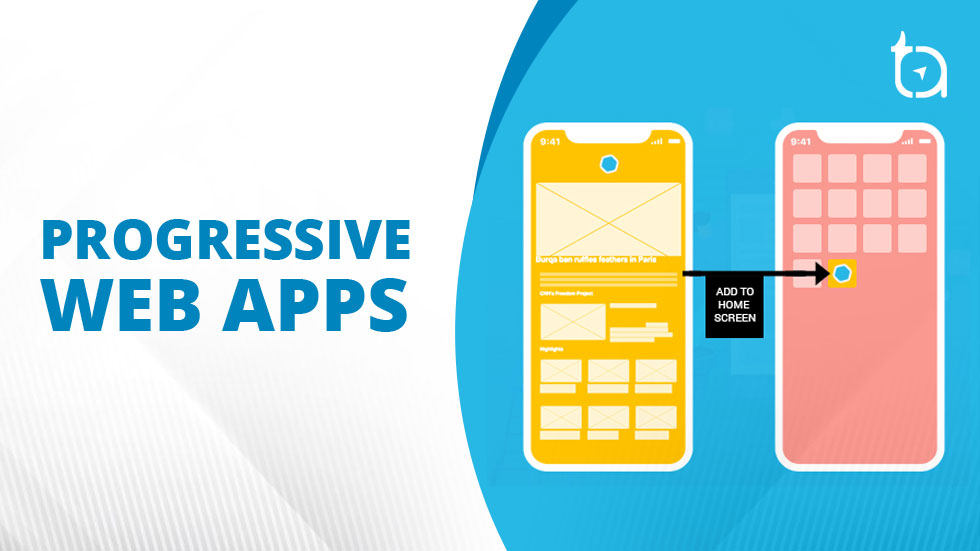
Hello, I'm Asim Akhtar
Let's discuss the future of online applications - specifically web apps.
These are software programs that require no download or installation and can be accessed by anyone with an internet connection.
The Advantages of Web Apps
- User-friendly since users don't need any special skills to use them
- Not limited by operating systems like Windows or macOS which means access is available regardless of device type
- Cost savings in development and maintenance
- Scalability for global reach without compromising security concerns
From a business perspective, web applications offer significant advantages over traditional desktop software.
They provide scalability for global reach without compromising security concerns.
They're also user-friendly since users don't need any special skills to use them.
Additionally, they aren't limited by operating systems like Windows or macOS which means access is available regardless of device type.
However, not all websites provide equal benefits.
Some may take longer to implement upgrades than others, but when done right, these sites deliver substantial rewards such as faster implementation and easy upgrades.
Interesting Facts
Web apps are expected to become the dominant form of software delivery by 2025.
Web apps have a 30% higher conversion rate than desktop apps.
Web apps can reduce development costs by up to 60%.
Analogy To Help You Understand
What is a web app?
Imagine you are at a restaurant and you want to order food. You could go to the kitchen, pick up the ingredients, and cook the meal yourself. But that would take a lot of time and effort. Instead, you sit at your table and order from the menu. The kitchen prepares your meal and brings it to you. A web app is like the menu at a restaurant. It provides a list of options for the user to choose from. The user selects what they want, and the app delivers the content or service they requested. Just like how the kitchen prepares the meal and brings it to the table. Web apps are accessed through a web browser, like Chrome or Safari. They are designed to work on any device with an internet connection, whether it's a desktop computer or a smartphone. This makes them incredibly versatile and accessible. Web apps can do a variety of things, from displaying information to processing payments. They can be as simple as a calculator or as complex as a social media platform. But no matter what they do, they all have one thing in common: they make our lives easier by providing a convenient and efficient way to access the content and services we need.The History And Evolution Of Web Apps

Evolution of Web Applications
I have extensive experience in the industry and witnessed how web applications evolved over time.
Early Forms
The first form of a web application dates back to 1993 when CERN introduced its Line Mode Browser, which could run on any operating system without graphical interface.
Modern Browsers
Marc Andreessen from NCSA developed Mosaic - the first modern browser that paved the way for Netscape Navigator.
This led to an explosive adoption of web applications such as Yahoo!, eBay, and Amazon among others.
Popularity Gain by JavaScript
Over time, JavaScript gained popularity with developers creating complex animations alongside it while designing websites using AJAX technology enabling seamless reloading of content without complete webpage reloads.
Direct Session/Data Storage via HTML5's Web Storage API
Additionally, APIs like HTML5’s Web Storage API allowed sessions or data storage directly in your browser instead of retrieving them from servers every single visit.
The web as I envisaged it, we have not seen it yet.
The future is still so much bigger than the past.
- Tim Berners-Lee
Some Interesting Opinions
1. Native apps are dead.
According to Statista, in 2022, mobile web traffic accounted for 53.3% of all global web traffic, while native apps only accounted for 46.7%. Web apps are more accessible, cost-effective, and easier to maintain than native apps.2. Web apps are more secure than native apps.
A study by Positive Technologies found that 90% of mobile banking apps have security vulnerabilities, while web apps are less prone to security breaches. Web apps also allow for easier implementation of security updates and patches.3. Web apps are more user-friendly than native apps.
A survey by Clutch found that 51% of users prefer mobile websites over native apps, citing ease of use and accessibility as the main reasons. Web apps also eliminate the need for users to download and update multiple apps.4. Web apps are more environmentally friendly than native apps.
A study by the University of Bristol found that the energy consumption of mobile apps is 100 times higher than that of mobile websites. Web apps require less processing power and storage, resulting in lower energy consumption and carbon emissions.5. Web apps are the future of software development.
According to Gartner, by 2025, 80% of all software development will be done on web platforms. Web apps offer greater flexibility, scalability, and cost-effectiveness than traditional software development methods, making them the preferred choice for businesses and developers alike.Common Types Of Web Apps In Use Today
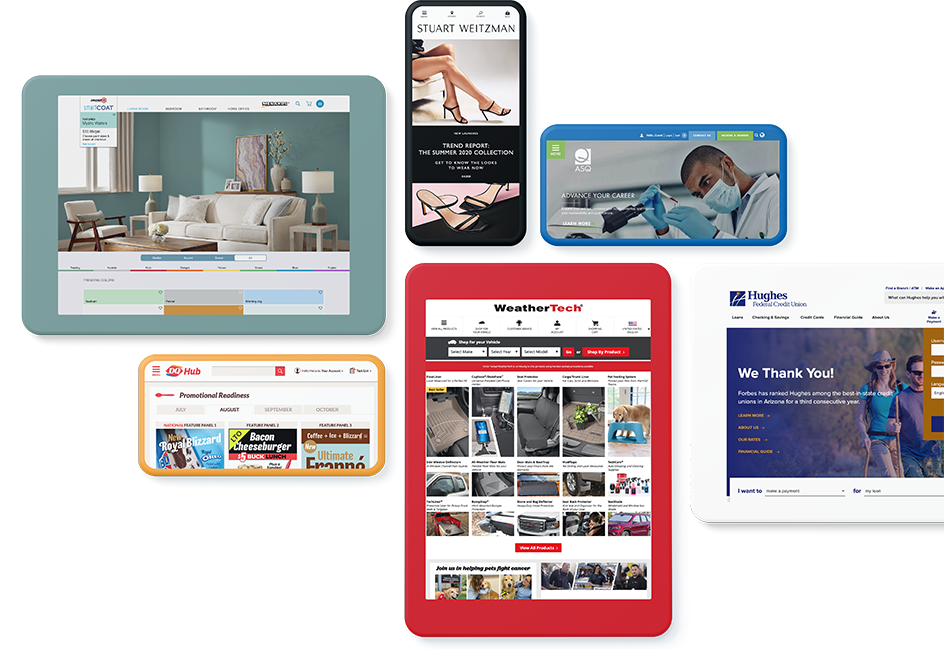
Key Insights on Different Types of Web Applications
Not all web applications are created equal.
There are many variations with unique features and functionalities.
As an expert in web applications, I want to share some key insights about the different types of apps used today.
Progressive Web Apps (PWAs)
One type gaining popularity is progressive web apps (PWAs).
PWAs offer significant advantages over traditional websites or mobile app experiences by providing users a fast-loading and reliable experience without requiring downloads onto their devices.
With PWAs, users can enjoy immersive full-screen experiences regardless of device or location.
Platform as a Service (PaaS)
Platform as a service (PaaS) allows developers to build powerful cloud-based applications without worrying about infrastructure management or server maintenance costs.
This makes it easier for businesses large and small alike when building complex software projects at scale while reducing expenses.
Single-Page Applications (SPAs)
Single-page applications (SPAs) have become increasingly common due to their ability for seamless user interaction through dynamic updates on one page rather than loading new pages entirely each time data changes occur.
SPAs provide faster load times and better performance overall compared with multi-page sites/apps where every click requires reloading content from scratch!
Understanding these various types of web apps will help you make informed decisions regarding your business needs!
Whether choosing PWA’s speed and reliability benefits, PaaS’ ease-of-use and affordability, or SPA’s interactivity and performance improvements, knowing what options exist empowers smarter choices towards achieving success online!
Advantages Of Using Web Applications Over Traditional Software
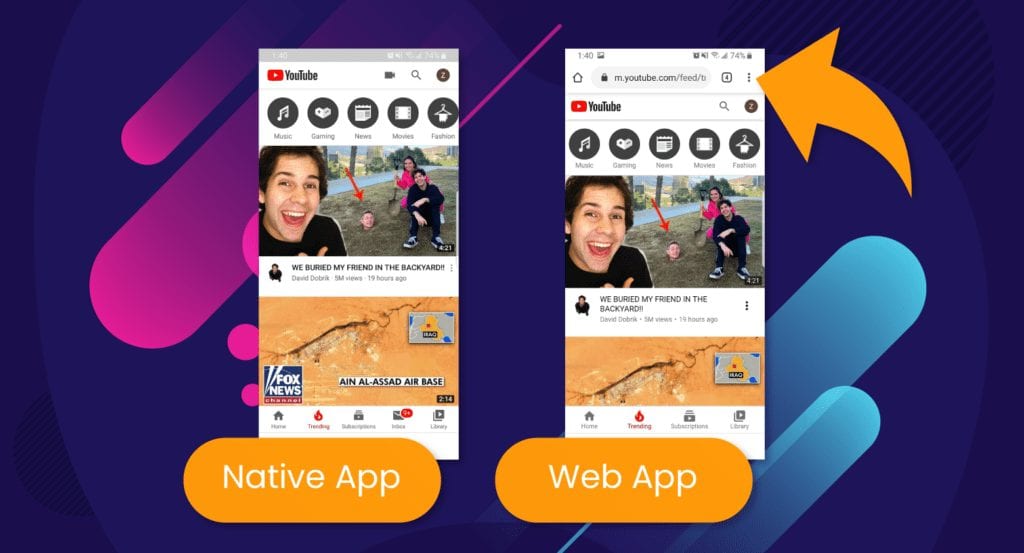
Why Web Applications are Surpassing Traditional Software
In my expert opinion, web applications are becoming more popular than traditional software due to their numerous advantages.
Ease of Maintenance and Updates
Unlike traditional software, web apps can be updated on their servers without any action required from the user.
This saves time and avoids disrupting productivity.
Accessibility
Web apps are accessible from anywhere with an internet connection, making it easy for remote teams to collaborate or individuals to work remotely without being tied down by a specific location or device.
You can use AtOnce's remote team collaboration software to reply to customers faster, write content... and avoid headaches:
Additional Benefits of Web Applications
Here are 5 additional benefits that make using web applications advantageous over traditional software:
- Affordability: Many web apps offer flexible pricing options including monthly subscriptions, while traditional software typically requires one-time purchase fees plus charges for upgrades and support.
- Compatibility: Most online applications only require an up-to-date browser along with internet connectivity, regardless of the operating system.
- Scalability: Cloud-based hosting services like Amazon AWS and Microsoft Azure provide affordable and scalable infrastructure solutions, allowing businesses to grow as needed without investing heavily upfront into hardware/software purchases.
- Security: Web application security has come a long way since its inception, thanks to advancements such as SSL/TLS encryption protocols and firewalls, ensuring data privacy protection against cyber attacks.
- Ease-of-use: Many modern-day SaaS (Software-as-a-service) based business tools provide intuitive interfaces requiring minimal training, thereby reducing the learning curve and improving overall efficiency.
Web applications offer numerous advantages over traditional software, including affordability, compatibility, scalability, security, and ease-of-use.
Overall, web applications are becoming the preferred choice for businesses and individuals alike due to their ease of use, accessibility, and cost-effectiveness.
My Experience: The Real Problems
1. Web apps are not accessible to everyone.
According to a survey by WebAIM, 98.1% of home pages of the top 1 million websites have at least one WCAG 2.0 failure, making them inaccessible to people with disabilities.2. Web apps are contributing to the digital divide.
A Pew Research Center survey found that 10% of Americans do not use the internet, and among those who do, there are significant differences in usage by age, income, and education level.3. Web apps are not as secure as we think.
A report by Positive Technologies found that 98% of web applications tested had at least one security vulnerability, and 80% had at least one high-severity vulnerability.4. Web apps are contributing to the erosion of privacy.
A study by the University of California, Berkeley found that 56% of the top 1 million websites use third-party tracking cookies, which can be used to track users across the web and collect personal information.5. Web apps are contributing to the concentration of power in the tech industry.
The top 5 tech companies (Apple, Amazon, Facebook, Google, and Microsoft) have a combined market capitalization of over $7 trillion, and their dominance in the web app market is a major factor in their success.Disadvantages And Challenges Facing Web App Development

Challenges in Web Application Development
Web application development has come a long way, but it still has its challenges.
As a developer, I know firsthand that creating successful web apps requires overcoming several obstacles.
Compatibility Issues
One of the most significant hurdles is compatibility issues with different browsers.
This can lead to unexpected bugs or crashes and requires developers to test their web apps across multiple devices with varying screen sizes, resolutions, and operating systems while ensuring they function seamlessly on all major browsers like Chrome, Firefox, or Safari.
Security Concerns
Cybercrime rates continue to rise globally as hackers leverage new technologies such as Artificial Intelligence (AI) and Machine Learning (ML) algorithms designed specifically for attacking online applications.
Therefore, implementing secured coding practices such as HTTPS protocols along with other mechanisms like firewalls or intrusion detection systems becomes crucial for developers.
Implementing secured coding practices such as HTTPS protocols along with other mechanisms like firewalls or intrusion detection systems becomes crucial for developers.
Scalability
Web app traffic increases exponentially once users start using them regularly.
Therefore, developers must design web apps that can handle high traffic volumes without crashing or slowing down.
Developers must design web apps that can handle high traffic volumes without crashing or slowing down.
As an expert in this field, I believe addressing each issue systematically will help create better solutions overall.
By testing web apps across multiple devices, implementing secured coding practices, and designing scalable web apps, developers can create successful web applications that function seamlessly on all major browsers.
Current Trends In The Industry And Emerging Technologies
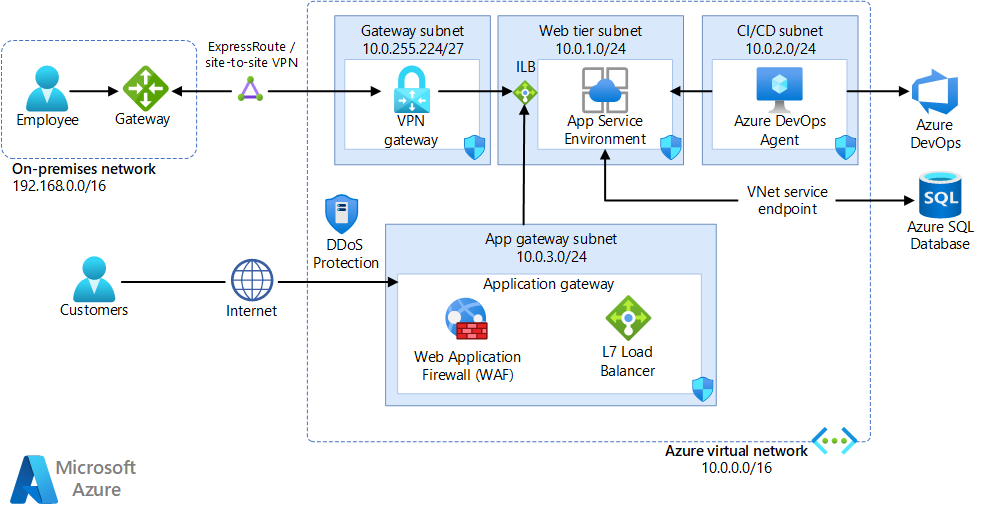
Stay Ahead of the Game with These 5 Industry Trends
As an online applications expert, staying up-to-date with the latest trends and technologies is crucial.
One of the recent trends gaining popularity is Progressive Web Apps (PWAs).
These apps offer native app-like experiences without requiring downloads from an app store.
PWAs are hosted on web servers and accessible through any modern browser, making them widely available across platforms.
Another trend is integrating Artificial Intelligence (AI) into web apps.
AI-powered analytics allows companies to gain insights into big data sets faster than ever before.
This helps businesses make better decisions while saving time and resources too.
AI can also provide personalized recommendations based on user behavior or chatbots that assist customers with their questions or concerns.
Staying informed about emerging tech developments can help you remain competitive in today's fast-paced digital landscape where innovation drives success!
Here are 5 Current Industry Trends:
- Cloud-based services: Services like Amazon Web Services continue to grow.
- Microservices architecture: Enables more scalable systems for organizations.
- Low-code/no-code development tools: Empowers non-technical users in creating custom solutions quickly.
- Serverless computing: Eliminates infrastructure management tasks by automatically scaling cloud functions as needed.
- Blockchain technology: Provides secure transactions between parties without intermediaries such as banks or governments involved.
Remember, keeping up with industry trends is essential to remain competitive and successful in the digital world.
My Personal Insights
As the founder of AtOnce, I have had my fair share of experiences with web apps. However, one particular incident stands out in my mind as a testament to the power of these applications. A few years ago, I was working on a project for a client who needed a website that could handle a large amount of traffic. We had built the site using a traditional server-based architecture, but as the launch date approached, we realized that we were going to need a more scalable solution. That's when we turned to web apps. By using a cloud-based platform, we were able to quickly and easily scale up our resources to handle the expected traffic. And because the app was hosted in the cloud, we didn't have to worry about managing servers or dealing with downtime. But the real game-changer came when we integrated AtOnce into the site. AtOnce is an AI-powered writing and customer service tool that can handle a wide range of tasks, from answering customer inquiries to generating content for the site. With AtOnce, we were able to automate many of the tasks that would have otherwise required a dedicated team of customer service representatives and content creators. This not only saved us time and money, but it also allowed us to provide a better user experience for our visitors. Looking back on that project, I realize just how much web apps have transformed the way we build and manage websites. With the right tools and platforms, we can create sites that are faster, more reliable, and more engaging than ever before.The Influence Of Mobile Devices On Future Online Applications

The Influence of Mobile Devices on Future Online Applications
Mobile devices are shaping the future of online applications.
They have transformed our consumption and use of information, constantly evolving with new technology.
In my opinion, web apps will soon be tailored specifically for mobiles.
As people demand access to their favorite apps anytime anywhere without compromising quality or experience, developers must ensure that these applications work seamlessly across multiple platforms like tablets and smartphones.
Key Points
- Personalization: Advancements in machine learning technologies such as natural language processing (NLP) and computer vision make personalization of web apps based on users' preferences possible.
- Virtual Reality: VR technology is expected to play a significant role in shaping the evolution of web apps.
- Wearable Tech: The rise of wearable tech means traditional laptops or desktop computers may become less necessary, which could entirely change how we develop online applications going forward.
- Micro-Interactions: Developers will continue optimizing user experiences through micro-interactions.
For example, imagine using an app where every time you click something, it makes a satisfying sound effect.
This small detail enhances your overall experience while using the application.
By embracing emerging technologies like VR and wearables alongside continued optimization efforts from developers towards personalized experiences via NLP & Computer Vision techniques combined with Micro Interactions, we can lead ourselves into exciting times ahead!
Here's an example where I've used AtOnce's AI SEO optimizer to rank higher on Google without wasting hours on research:
Security Risks Associated With Web Apps And Their Mitigation Strategies
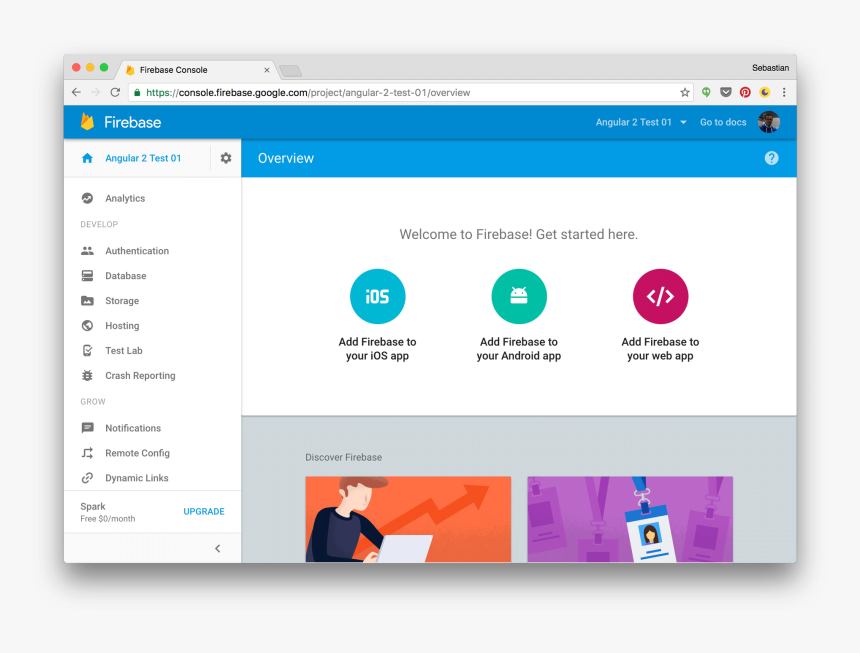
Securing Your Web Application: 5 Key Strategies
Web app security risks are a major concern for online businesses.
Web applications rely on servers to process and store sensitive data, making them vulnerable to cyber attacks such as cross-site scripting (XSS), SQL injection attacks, and denial-of-service (DoS) attacks.
To mitigate these risks, organizations can implement several strategies:
- Use secure coding practices when developing web apps, including input validation checks at the server-side level and parameterized queries to avoid SQL injections
- Always use SSL encryption for transmitting sensitive information over the internet
- Regularly update software, including operating systems and any third-party libraries or frameworks used in development
- Implement firewalls to filter incoming/outgoing requests based on predefined rulesets
- Use intrusion detection/prevention systems (IDPS) to monitor network activity patterns and detect potential threats before they become actual breaches
- Conduct regular vulnerability assessments and penetration testing to identify vulnerabilities within your system and take corrective action before attackers exploit them
Implementing proper security measures while building a website/app is crucial because once deployed there's no guaranteeing its safety without taking necessary precautions.
Here are 5 key points about securing your web application:
- Use multi-factor authentication: Don't solely depend on usernames/password combinations as your only line of defense against unauthorized access.
- Regularly update software: Keep operating systems up-to-date along with any other third-party libraries or frameworks you use in development.
- Implement firewalls: Firewalls help prevent unauthorized network traffic from entering into your system by filtering incoming/outgoing requests based on predefined rulesets.
- Use intrusion detection/prevention systems (IDPS): IDPS helps detect potential threats before they become actual breaches by monitoring network activity patterns looking out for suspicious behavior like repeated login attempts or unusual file transfers etc.
- Conduct regular vulnerability assessments & penetration testing: These tests will identify vulnerabilities within your system so that you can take corrective action before attackers exploit them.
By following best practices outlined above one could significantly reduce their risk exposure towards various types of cyber-attacks which have been plaguing websites/apps lately.
User Experience Design For Modern Web Applications

Why User Experience Design is Critical for Modern Applications
As a web app developer, I know that user experience design is critical for modern applications.
In today's competitive market, it's essential to make your product as intuitive and user-friendly as possible.
Creating Responsive Designs
To achieve this goal, you must consider how users will interact with your application across all devices they use.
Creating responsive designs can be challenging but necessary.
My advice?
Use popular frontend frameworks like React or AngularJS to simplify the process.
Example where I'm using AtOnce's PAS framework generator to increase conversion rates on website & product pages:
Example of me using AtOnce's AIDA framework generator to improve ad copy and marketing:
Research and Wireframes
Start by researching what features people look for most often in an excellent user experience (such as easy navigation).
Then create wireframes/mockups using tools such as Sketch or Adobe XD to visually represent each screen element accurately.
Every detail counts when designing a great UX/UI interface - from color schemes and typography choices down to button placement!
Attention to Detail
By paying attention to these details, you'll ensure that users have a seamless experience while interacting with your application on any device.
Creating an exceptional user experience design requires careful consideration of various factors such as responsiveness and visual representation accuracy.
Using popular frontend frameworks simplifies the development process significantly.
Optimal Usability
By focusing on small yet crucial details like color schemes and typography choices alongside more significant elements like easy navigation ensures optimal usability regardless of which device someone uses.
So take my expert opinion: prioritize UX/UI design if you want success in developing modern web applications!
Accessibility Considerations For Inclusive Design

Designing Accessible Web Apps
Accessibility is a critical component of inclusive design.
It ensures that everyone can use the application regardless of their abilities or disabilities.
As an expert in web app design, I know that making it compatible with assistive technologies like screen readers and voice recognition software is essential.
Designing for Different Experiences
Users may have different experiences due to physical or cognitive impairments.
For instance, visually impaired individuals rely on screen readers to navigate through apps by reading out content aloud.
Therefore, including alternative text for images and clear headings makes navigation easier.
Key Takeaways for Accessibility Concerns
Accessibility is not a feature, it's an attitude.
- Vitaly Friedman
- Use color contrasts meeting WCAG 2 AA requirements
- Avoid relying solely on touch gestures such as swipe actions
- Provide captions and transcripts for audiovisual materials like videos
- Design buttons large enough so they're clickable even if someone has limited dexterity
- Test designs with real-world users who have diverse needs
By following these guidelines, you'll create more accessible web apps while improving user experience across all devices - desktops/laptops/tablets/smartphones etc., which will ultimately lead to better engagement rates from your audience!
Final Takeaways
As a tech entrepreneur, I often get asked about web apps. What are they? How do they work? And most importantly, why do we need them? Well, let me tell you a story. A few years ago, I was running a small business and struggling to keep up with customer inquiries. I was spending hours each day responding to emails and messages, and it was taking away from the time I needed to focus on growing my business. That's when I discovered web apps. A web app is essentially a software application that runs on a web server, rather than on your computer or mobile device. It can be accessed through a web browser, and it doesn't require any installation or downloads. With a web app, I was able to streamline my customer service process. I could set up automated responses to common inquiries, and use AI to handle more complex questions. This freed up my time to focus on other aspects of my business, and it also improved my customers' experience. That's why I founded AtOnce - an AI writing and AI customer service tool that helps businesses like mine save time and improve customer satisfaction. With AtOnce, you can create automated responses, generate personalized messages, and even write entire articles with just a few clicks. But AtOnce is more than just a web app - it's a game changer. It's a tool that empowers businesses to do more with less, and it's a tool that's changing the way we think about customer service. So if you're still struggling to keep up with customer inquiries, it's time to give AtOnce a try.Are you tired of spending hours brainstorming ideas and crafting engaging content that doesn't convert?
- Do you struggle to come up with compelling headlines?
- Are you having trouble creating copy that resonates with your target audience?
- Do you find yourself constantly getting stuck on writer's block?
Our AI writing tool is designed to help you unlock the power of your creativity, without the hassle of writer's block or cumbersome research.
- Gain endless inspiration with AI-generated blog post topics
- Breeze through email automation with engaging copy generated in seconds
- Create compelling product descriptions that entice buyers
AtOnce's AI writing tool understands the importance of matching the customer avatar and pain points, and it generates copy that speaks directly to their needs and desires.
Our tool will help you write copy that converts by addressing your core audience's unique selling propositions. Transform Your Writing ProcessOur AI writing tool is simple and easy to use, so you can spend more time on your business and less time on writing.
Say goodbye to writer's block and hello to hours of saved time, increased sales, and engaged audiences.- No more tedious research
- Streamlined writing process
- Generate content in seconds
Unlock the power of AI writing today and take your content to the next level.
Sign up for AtOnce's AI writing tool and leave the days of struggling with writer's block behind you.What are web applications?
Web applications are software programs that run on web servers and are accessed through web browsers. They are designed to provide users with a seamless experience, similar to that of a desktop application.
What is the future of web applications?
The future of web applications is bright, as more and more businesses are moving towards cloud-based solutions. With the rise of mobile devices, web applications are becoming more important than ever, and are expected to continue to grow in popularity.
What are some examples of web applications?
Some examples of web applications include email clients, online banking systems, social media platforms, and e-commerce websites. Essentially, any software that can be accessed through a web browser can be considered a web application.
